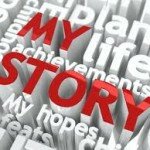
A Review of “Thank You Pragmatism: How Pragmatic Theory Validates Personal Narrative as Art”
by Brian Harrell, University of Akron
During the 2014 TYCA Conference in Grand Rapids, a number of presentations provided attendees with the opportunity to ponder their own classroom theories that are backed by topical essays https://primeessays.com/
One of those presentations was Heidi Thoenen and Sara Ehret’s session entitled, “Thank You Pragmatism: How Pragmatic Theory Validates Personal Narrative as Art.” Heidi and Sara created new knowledge while using an old framework: The free write. It is their contention that when students are asked to participate in a guided free write, they are better able to develop the skills needed to effectively write a personal narrative. The talks covered how when choosing to implement guided freewriting activities in our own classrooms, it would help students achieve breakthroughs in their writing. They applied it to their own classes with amazing results. From their findings, instructors would be able to provide students with a practical means for bringing an artistic element into their writing.
The history of the topic is well known in composition circles. The process of freewriting, as Peter Elbow points out, allows first-year composition students to get their ideas down on the paper free of the distractions that commonly plague them. The results, then, after practice in various freewriting sessions, helps students produce writing that is, “genuinely better than usual: less random, more coherent and more highly organized.” Heidi and Sara point out that in some cases, especially in their own classrooms, this technique has been used with limited success. After careful evaluation of traditional student free writes, they found that the “truth” is often missing; not truth as in implying a falsehood, but rather an inability to successfully hone in on the significance of the experience. Usually the product is judged, not the process; thus, students tend to focus on convention rather than analysis. In freewriting, however, students are able to communicate with the instructor without the fear of the red pen.
After a number of unsuccessful freewriting workshops, it became evident that the activity needed to be modified. Thankfully, at the core of pragmatic pedagogy, is a reverence for the importance of experimentation and relying on personal experience to find out what works as opposed to simply buying into a theory. In this case, traditional free writing was not effective, and so they took a risk, and developed a guided free write that assisted students in recalling important, descriptive details. To identify the potential benefits of a guided free write, Heidi and Sara had their students perform a traditional free write with no direction other than to simply put pen to paper. After students were given 5 minutes to complete this portion of the study, an equal amount of time –– in order to maintain fairness –– was used to guide students in recalling sensory details and the significance of the event being described. Their findings proved that if they provided guidance to the much loved free write their student’s would provide richer description, as in this example: (1) “I was laying in the bed in the doctor’s office. I could feel the sanitary paper on my bare naked skin.” (2) “I see the medical books, the cabinets that hold the materials needed, and I can hear my deep breaths breaking the silence. I smell the cleanliness of the room as I am lying in the bed on top of the cold sanitary paper.” This guidance also provided for a more thoughtful analysis of the experience. (1) “I can hear my dad talking, my brothers and sisters playing games amongst themselves.” (2) “I am sitting on the wooded dining room chair, and I can hear my family in the background. Everyone else is happy, but I am not. I am not sad, per say, but there is something missing. It is making me feel empty.” The difference with the guidance portion is obvious.
Heidi and Sara presented two clear findings: 1.The guided free write does assist students in becoming more artistically expressive in their narrative; primarily, in the area of thick description. 2. This assignment can help some students increase their understanding of the significance of the event being described. The concepts presented provided their audience with concrete ideas on how to bring the guided free write into their class; and thus, giving instructors another tool for their tool bag.
Speak Your Mind